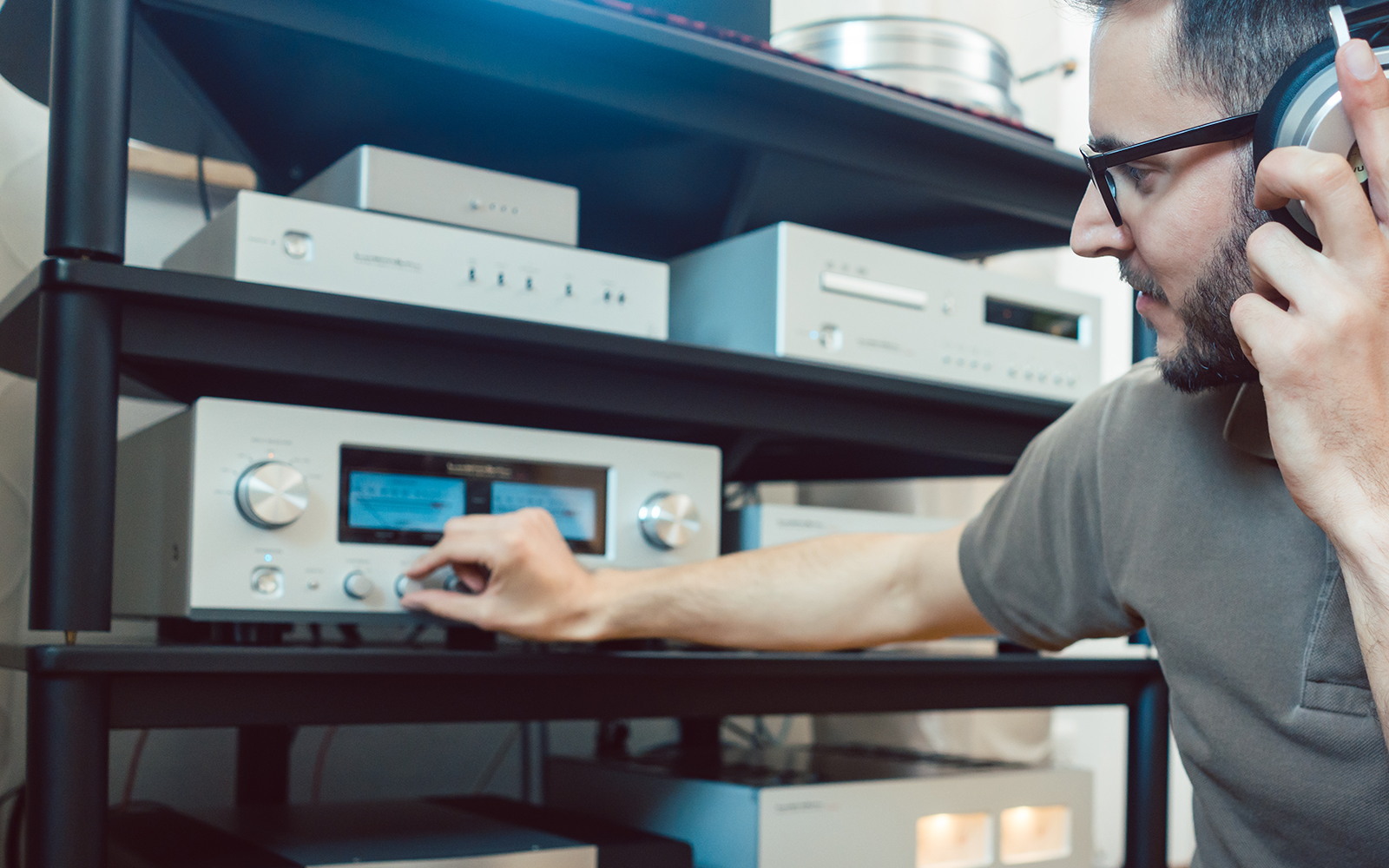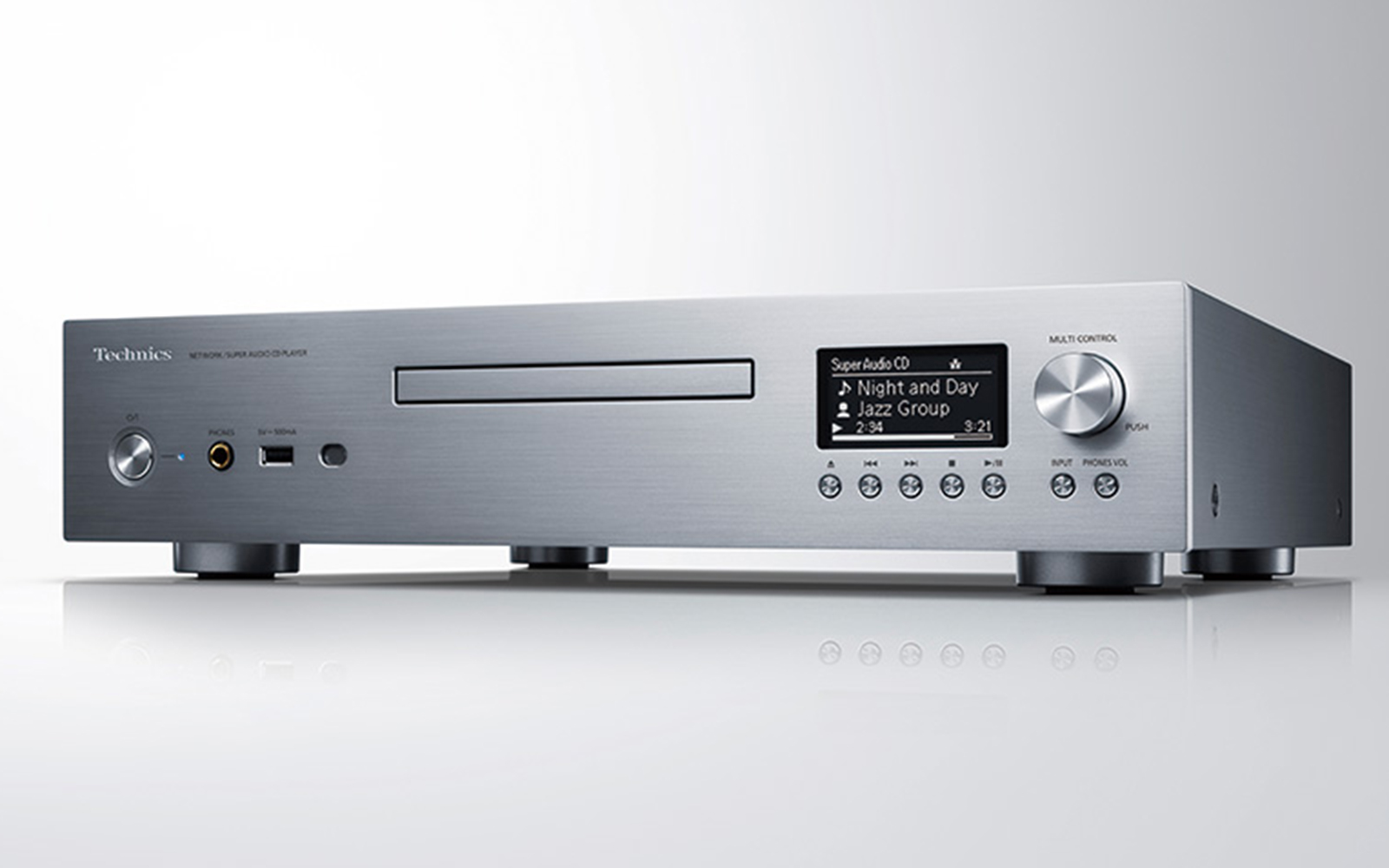
High-fidelity and high-end home audio are foreign concepts to many people. The term high fidelity (or hi-fi) simply means that the equipment reproduces the music faithfully to the recording. Of course, the vast majority of people listening to music are using fairly inexpensive equipment—from smartphones and Bluetooth speakers to streaming services like Apple Music and Spotify—built for convenience rather than fidelity.
Unknown to most consumers, there’s a huge market for higher-end home audio equipment that reproduces music with a whole lot more depth than devices built for convenience. To many audiophiles (buyers of this expensive equipment) vinyl remains the pinnacle of fidelity, while also providing a tonal warmth that has a nostalgic sound to many listeners. Vinyl has had something of a resurgence in the last decade or so and many popular recording artists press their albums to vinyl and make them available online or in boutique brick-and-mortar record stores. (Yes, record stores still exist.)
In recent years, high-resolution digital audio files (not to be confused with audiophiles) have become more popular, thanks in part to the streaming service Tidal, which offers convenient access to stream music in a higher-resolution format than Apple Music, Spotify, and other streaming services. (Part of Tidal’s rise in popularity is due to Rapper Jay-Z’s majority ownership, which he recently sold to credit card company Square for about $300 million.) High-resolution music can also be purchased from sites like HDtracks, with albums costing about as much (or a little more) as a CD or record.
Whether you listen to vinyl, CDs, or high-resolution—and if you’re new to hi-fi—you need equipment to make the music sound as good as the musicians intended. But as previously stated, this is foreign territory to many. If you’re just looking for the basics and don’t want to break the bank, sites like Audio Advisor and Music Direct are good places to start, but if you’re ready to get serious about your home stereo and have some money to spend, you should absolutely seek out your local hi-fi dealer (search Google Maps for “hi-fi audio dealers” near you), who will work with you to build your dream system tailored to your musical preferences, your listening space at home, and your budget. And in many cases, you can’t buy hi-fi equipment direct from manufacturers, so you’ll need to either find it from an online retailer or from a dealer, who very often have listening spaces set up at their showrooms for you to test the gear before you buy it.
What follows are some basic options to get you started on your audiophile journey. While you can easily spend six figures on a serious audiophile-grade system (yep, $250,000 home stereos are not uncommon in the audiophile world), the below items have been selected for their musical fidelity, approachable expense, and ease of use for those building their first hi-fi home stereo.
Happy listening.
Analogue Source (Turntable)

Starting with your source (i.e. where the music is coming from), Rega is a British company offering a range of very good turntables that come equipped with a tonearm and cartridge (which houses the needle). The Rega Planar 8 turntable ($3,695) is one of the company’s higher-end models, but it is worth the cost. It pairs a ton of advanced technology and materials to deliver flawless sound in a sleek and ultra-modern design.

A step down from this—but still offering very good sound for most listeners–the Pro-Ject Debut Carbon EVO ($499) is frequently lauded as one of the best inexpensive turntables on the market.
Digital Source
As mentioned above, high-resolution audio is a great and convenient way (more convenient than flipping records) to listen to really high-quality music.
The Cambridge Audio CXN ($1,099) gives you a ton of options for wireless streaming—Tidal, Spotify, AirPlay, Chromecast, and Bluetooth (with an adapter)—or access to an external hard drive of high-resolution music via USB.

If you want the option of digital files and CDs, then the Technics SL-G700 ($3,000) is a great streamer-CD-player combo.
Or (much to the chagrin of many old-school audiophiles) your smartphone can be a great source for digital music. If you want as much wireless fidelity as possible, you’ll want to make sure your phone supports aptX HD Bluetooth, which is essentially the same as Bluetooth, except it supports streaming higher-quality music files. Many LG and Samsung phones support aptX HD, but Apple iPhones don’t. You’ll also need a receiver able to accept the aptX HD signal—which the highly capable NAD M10 integrated amplifier does.
Integrated Amplifier
Amplifiers are the most complicated part of the hi-fi supply chain. Many audiophiles argue that the utmost fidelity comes from separate components—a preamplifier to process analog signals, a preamplifier to process digital signals (and sometimes a separate device to convert and sync signals), and finally a power amplifier to deliver power to the speakers. That’s an oversimplification of how music reproduction works, but many audiophiles shell out big bucks for large stacks of preamplifiers and power amplifiers. Of course, the simple solution that, from the right component, still sounds great is an integrated amplifier, which combines all of those components in a single box.

With the NAD M10 ($2,749) you also get a competent music streamer in the same box, as this nifty device handles all signal processing (both analog and digital) and power needs (up to 100 watts per speaker). It also offers wireless playback via aptX HD Bluetooth and connects directly with lots of streaming and digital music providers, including Tidal, Spotify, and HDtracks.

The only area this amp falls short is power output, but only when powering huge and very expensive audiophile-grade speakers with power requirements above 100 watts. It also does not have a headphone jack, but instead includes two-way Bluetooth for wireless headphones. For most uses, this amplifier is awesome and serves as a centerpiece for a convenient home stereo system with plenty of high fidelity.

A step down from this is the PS Audio Sprout 100 ($699), which comes in a much smaller box, but it is still plenty capable, offering an analog/digital preamplifier, 100-watt power amplifier, and Bluetooth streamer in one; plus it has a headphone jack (though no two-way Bluetooth). The Sprout has received high praises as the little amplifier that gets most jobs done.
Speakers
Things can get a little complicated when trying to pair speakers with amplifiers, as the amplifier needs to offer enough wattage output to sufficiently power the speakers, but this can vary depending on the impedance of the speakers. (Impedance is essentially a measurement—in ohms with the symbol Ω—of the speaker’s resistance to the electrical load coming from the power amplifier). In any case, just check the specifications of the amplifier and speakers to make sure the wattage is sufficient for the speaker’s impedance.

A great speaker option for most amplifiers (including those aforementioned) is the Focal Kanta No.2 ($10,000 per pair), though as is the case with any speaker, more power helps improve sound quality up to a point. Focal is a French company revered for its speakers, especially its Focal Grande Utopias ($120,000 per pair), and its Kanta No. 2 are a great choice for most systems. The speaker cabinet is made of a high-density polymer to help create acoustic warmth; the tweeter, which handles high-frequency sound, is made of Beryllium backed by a horn-based system, which contributes to extremely low distortion and a very high clarity; and the midrange and bass drivers are made from something called flax fibers, which make for extraordinarily strong and lightweight speaker cones, resulting in a high level of vibration control and, thus, musical precision.

For about a quarter of the price, the ELAC Carina FS247.4 speakers ($2,600 per pair) will give you loads of clarity and dynamics, though may lack some of the bass response of speakers with larger drivers. But in most rooms and with most systems, the Carinas will sound really good.
Headphones
Of course, even the wealthiest aspiring audiophiles may not have the luxury of sitting and listening to music at full volume with little disturbances. For those times when you want to enjoy music but every member of your household may not want to, a pair of headphones is a welcome solution. As with the above and even more so with headphones, there are a ton options, as well as several categories: over-ear, on-ear, in-ear (aka earbuds), open, closed, wireless, and noise-cancelling.

If you’re not ready for the extreme end of the spectrum—like the Sennheiser HE 1 headphone music system ($59,000)—Sennheiser has a wide range of solid offerings, including the HD 820 audiophile-grade over-ear headphones ($2,400). Or check out the all-in-one Naim Uniti Atom Headphone Edition ($3,290).

Audeze is another leader in full-size audiophile headphones and the Audeze LCD-X headphones ($1,199) are superb. They use planar magnetic drivers—an array of rare-earth magnets that powers a 1.8-microns-thick polymer film with a 4-micron-thick aluminum voice-coil—which are so thin and lightweight that they reproduce sound with incredible accuracy and clarity.

Grado Labs is another big name in the hi-fi headphone world, offering some high-end options, like the Grado PS200e headphones ($1,995), that many consider the gold-standard. The boutique Brooklyn manufacturer also makes highly competent headphones at the other end of the cost spectrum and the Grado SR325e headphones ($295) pack a lot of punch for the price.
Headphone Amplifiers

If you’re really serious about headphones and your speaker-system amplifier either doesn’t offer a headphone jack or enough power for your headphones, you’ll need a dedicated headphone amplifier with a built-in digital-to-analog converter (DAC), which takes the signal from your source and enables it to play through your headphones. (Even your smartphone has a DAC, but it’s cheaper and doesn’t sound nearly as good as a hi-fi-grade one.)

Options for headphone amps range from the iFi Zen DAC ($130), which is small, convenient, and packs in a lot of technology to work with a variety of sources and headphones, to the Simaudio 230HAD ($1,600), which delivers clean but powerful sound to all but the most-demanding headphones. The spectrum does continue upward from there, but these two options will be more than sufficient for most listeners.
Cables and Racks
So, now that you have all this stereo equipment, you need something to connect all the pieces and somewhere to put it all

Speaker cables are an entire world unto themselves and, until you drink all the audiophile Kool-Aid on your way down the hi-fi rabbit hole, AudioQuest is a well-known and reliable brand to start with for speaker cables, power cables, and innerconnects (cables that connect your equipment). Speaker cable prices (and corollary quality) range from about $400 for a 10-foot pair up to almost $60,000 for a 10-foot pair. (Believe it or not, AudioQuest has plenty of competition for speaker cables costing $60,000.) Perhaps the most sensible approach is to start with something relatively inexpensive and then upgrade your cables as you upgrade the rest of your system.

Stereo racks can present another quagmire for the aspiring audiophile, as there are a lot of options of various design and build quality and, at the end of the day, you can use any cabinet or surface, as long as it’s solidly built and fairly heavy, to help dampen any vibrations that might disrupt your equipment during playback. A good place to start is Salamander Designs, which offers several nice-looking and well-built options, many of which are modular, so you can create your own design based on your needs.
Hi-fi is fun and some good equipment will help make your favorite music sound better than ever—but beware, a starter stereo system could send you on a lifelong journey of hi-fi obsession.









